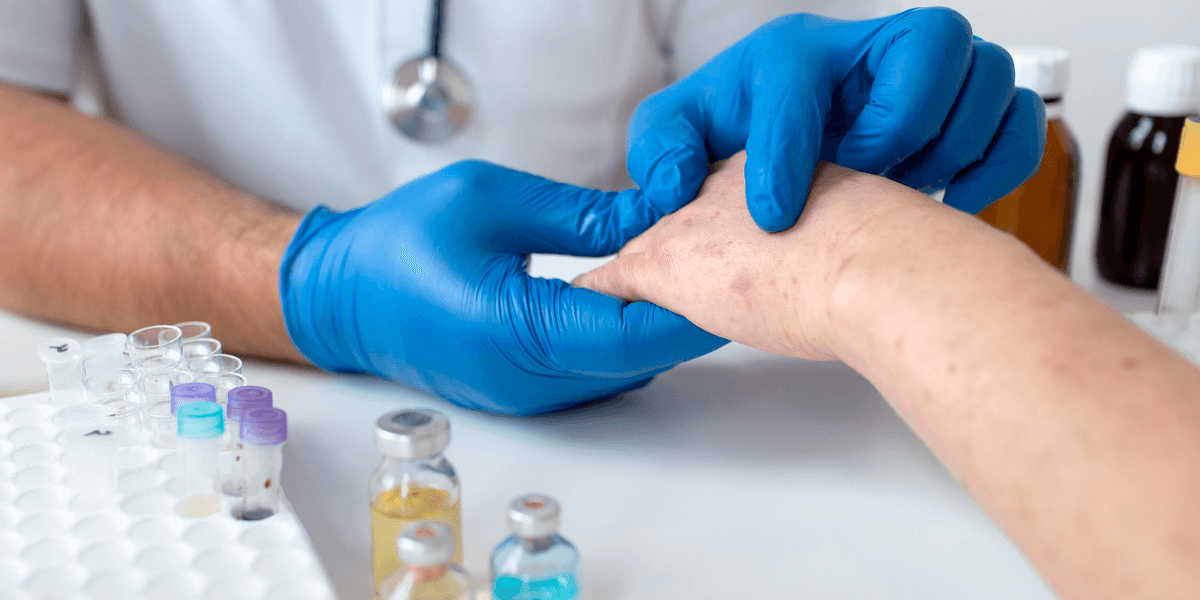


Melanoma is a type of skin cancer that is highly invasive and has a high risk of causing death. However, it can be cured if detected at an early stage. It is essential to take preventive measures and seek timely treatment, especially if you have fair skin, blonde or red hair, and blue eyes.
According to estimates from the American Cancer Society, there will be around 97,610 new cases of melanoma diagnosed in the United States in 2023. Among these cases, approximately 58,120 will be in men and 39,490 in women. Sadly, it is also expected that about 7,990 individuals will lose their lives to melanoma.
Melanoma, or "black tumor," is a skin cancer that begins in the melanocytes. Melanoma comes from skin cells called melanocytes. These cells produce melanin, the dark pigment that gives skin its color. Most melanomas are black or brown, but some are pink, red, purple, or skin-colored. It is the most dangerous type of skin cancer as it grows quickly and can spread to any organ.
Skin cancer is a serious issue, with melanoma responsible for most skin cancer-related deaths despite accounting for only 1% of all skin cancers. Melanoma is particularly prevalent among young people under 30, especially young women. Over the past three decades, there has been a significant rise in cases of melanoma, which is widely attributed to the growing levels of ultraviolet (UV) exposure.
Melanoma is a less common type of skin cancer, but it is more dangerous as it has a high tendency to spread to other body parts if not detected and treated early.
See Also: Melanoma: Types, Causes, and Treatment
Melanoma can develop on any part of your body, including areas not exposed to the sun. However, it is most commonly found in areas of the body that are frequently exposed to sunlight. Here are some typical locations where melanoma may occur:
Early identification of melanoma is important because it can be effectively treated at early stages. Melanoma may appear as moles, scaly patches, open sores, or raised bumps. To identify warning signs that a spot on your skin may be melanoma, the American Academy of Dermatology suggests using the "ABCDE" memory device:
Asymmetry: One half of the mole or spot doesn't match the other half.
Border: The edges are irregular, scalloped, or poorly defined.
Color: The color may vary and include shades of brown, black, tan, white, red, or blue.
Diameter: Melanomas are often larger in diameter than the size of a pencil eraser (about 6 millimeters or 1/4 inch), but they can be smaller when first detected.
Evolving: Any change in size, shape, color, or elevation, or any new symptom such as bleeding, itching, or crusting.
If you see any new, changing, itching, or bleeding spots on your skin that differ from others, schedule an appointment with our highly competent and board-certified general surgeons.
Melanoma is primarily caused by genetic and environmental factors, with exposure to ultraviolet (UV) radiation from the sun or artificial UV sources being a significant environmental risk factor. Here are some of the critical causes and risk factors associated with melanoma:
See Also: What Are the Symptoms of Skin Cancer?
If you have a suspicious-looking mole or spot, your doctor may perform a biopsy to analyze it under a microscope for cancer cells.
Once your doctor receives the skin biopsy results showing melanoma cells, the next step is to determine if the melanoma has spread, referred to as staging. The categorization of melanoma is based on several factors, such as its depth of spread and appearance under the microscope. The thickness of the tumor is the most significant factor in predicting outcomes.
Melanomas can be categorized into these stages:
Melanoma treatment options are diverse, contingent on factors like stage, tumor characteristics, and overall health. Here's a summary of crucial treatment approaches:
Treatment plans require open discussions with healthcare teams for personalization and optimal outcomes. Contact Far North Surgery for the best treatment of melanoma, if you reside in Anchorage, AK.
If skin cancer is detected and treated before it spreads, the chances of a cure are high. However, advanced melanoma can be life-threatening. Discovering and removing skin cancer as early as possible is crucial to increase the chances of a complete recovery.
If you see any sign or symptom of melanoma, there is no need to get nervous, as help is available in Anchorage, AK. Now you can get the best Melanoma Treatment in Anchorage, AK, from our highly competent and board-certified general surgeons specializing in melanoma treatment.
Dr. Madhu Prasad is one of the finest general surgeons and surgical oncologists in Anchorage, AK, and has recently been chosen for the Best of Anchorage Awards for Cancer Treatment.